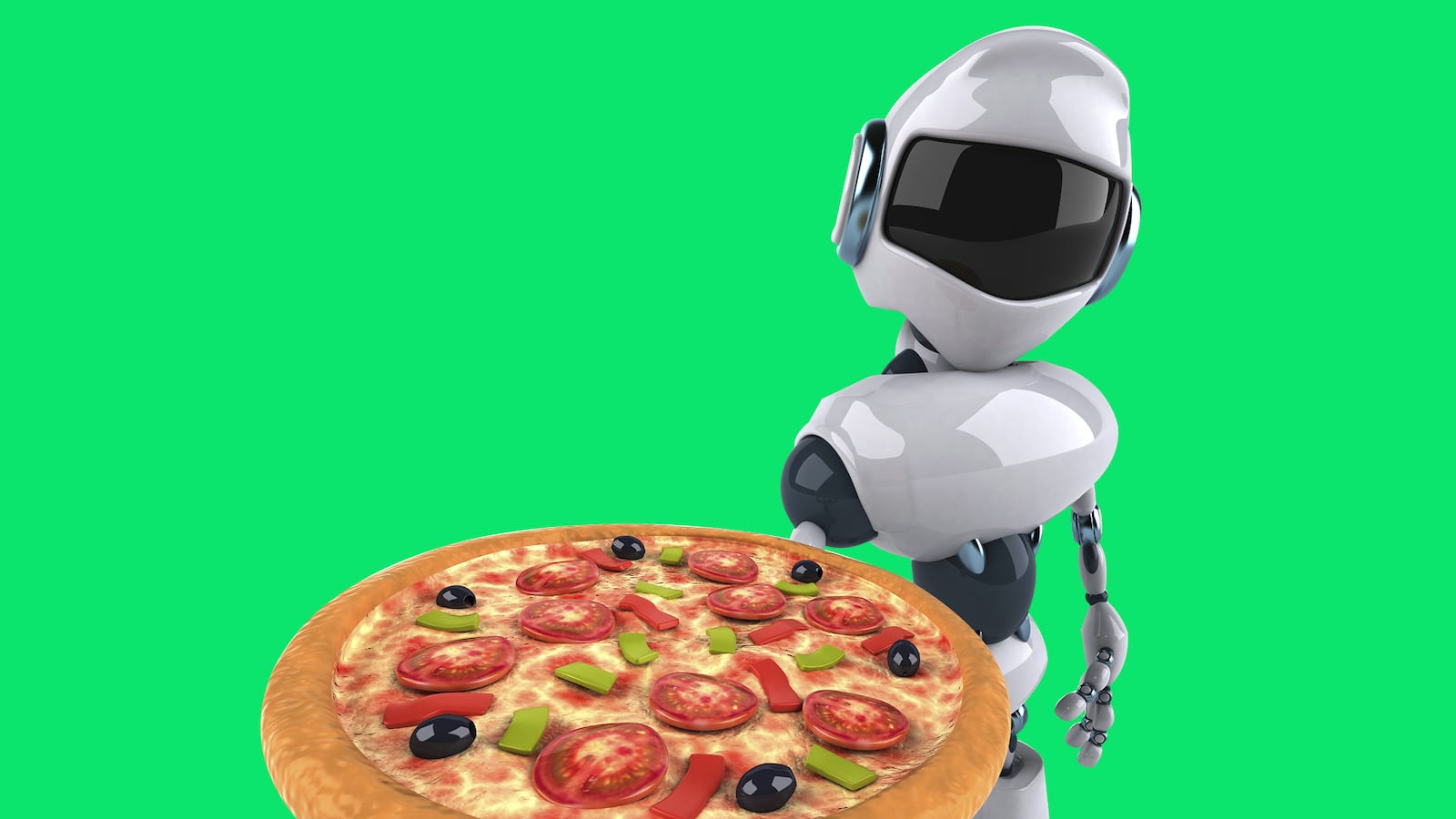In Neal Stephenson’s sci-fi novel Snowcrash, people study pizza delivery to ensure they can put pies in customers’ hands inside 30 minutes, without fail. Not much is certain in the book’s futuristic society, but the timely delivery of pizza is a guarantee on which everyone can rely.
In reality, drivers take the scenic route, go to the street instead of the avenue, or leave part of the order in the car. Delivery can turn into disappointment when the cheese congeals or the bag tears open because of grease seepage.
So, how do we solve our delivery woes? With robots, of course. (You didn’t think I was going to suggest cooking, did you?)
Domino’s in the UK made headlines in 2013 with their Domicopter, but admitted that the aerial pizza deliveries were a publicity stunt, not a legitimate business endeavor. But Domino’s Australia (not related to the U.S. franchise, but it pays for the name) has swapped out wings for wheels.
Domino’s down under will soon debut the Domino’s Robotic Unit, the world’s “first autonomous pizza delivery vehicle.” It’s a three-foot-high, four-wheeled robot that weighs roughly 400 pounds and can keep up to 10 pizzas warm (and drinks cold) as it makes deliveries. Sensors help it navigate and it runs on batteries, reaching top speeds of 12 mph. Customers receive a code that they use to unlock the compartment to get their food and DRU’s cameras live stream its route in case anyone tries any funny business.
The New Zealand government has given a thumbs-up for trials to begin there soon. The exact date hasn’t been set—regulations similar to those for driverless cars have to be sorted out to ensure that the DRUs can mesh with traffic, as they’ll use both streets and sidewalks to get around.
The prospect of drone delivery entered the mainstream in late 2013 when Amazon announced a future upgrade of its Prime delivery service. Prime Air customers would receive their goods (of less than five pounds) in 30 minutes or less via an octocopter. The delay in implementation reflects how hard it’s been for the FAA to determine drone legality and regulations. Safety is the main issue—just a few days ago a Lufthansa airliner had a close call with a drone flying thousands of miles higher than permitted near LAX. In 2015, airline pilots reported more than 650 drones, most of which were flying at heights or in locations prohibited by FAA regulations.
The first FAA-approved drone delivery took place in July 2015 when a drone carried medical supplies from the field to a clinic, and drones created by a California-based company have been delivering medical supplies in other parts of the world for a while. Hobbyists have been allowed to fly drones provided they abide by rules, avoid populated areas, and register any drone over 0.55 pounds with the FAA. Now there are three ways companies can obtain FAA permission to fly commercial drones. Amazon says it will “deploy when and where we have the regulatory support needed to safely realize our vision.” They’re coming to Wal-Mart too.
China leads the way when it comes to delivery drones. A courier company called SF Express started running delivery trials in Dongguan in 2013, and in March 2015 announced it would double its drone deliveries from roughly 500 to 1,000 per day. The aircraft cater to booming business in cities in south and east China, and the company hopes they’ll deliver to remote areas soon.
In 2014 Google revealed the existence of Project Wing, a previously secret drone delivery program the company had been testing in Australia and recently in California. Deliveries start in 2017 upon the conclusion of negotiations with the FAA.
Of course we’d expect corporate giants to embrace robotic deliveries, but other enterprising businesses have also attempted these futuristic services. Perhaps the most creative is Lakemaid Beer, whose drones delivered frosty brews to people ice fishing in the Minnesota wilderness until the FAA shut it down. If that’s not the perfect drone-delivery scenario, I don’t know what is.
The Burrito Bomber, the “world’s first airborne Mexican food delivery system,” has been functional since late 2012, but it too has been grounded by the FAA. Its website promises that it will start delivering burritos as soon as it can. Sorry, Taco Bell.
And then there’s the EHang 184, an autonomous aerial vehicle that can deliver human passengers. It might be a while before the contraption is approved, but by then, we should be able to order pizza, burritos, and beer for the ride.






